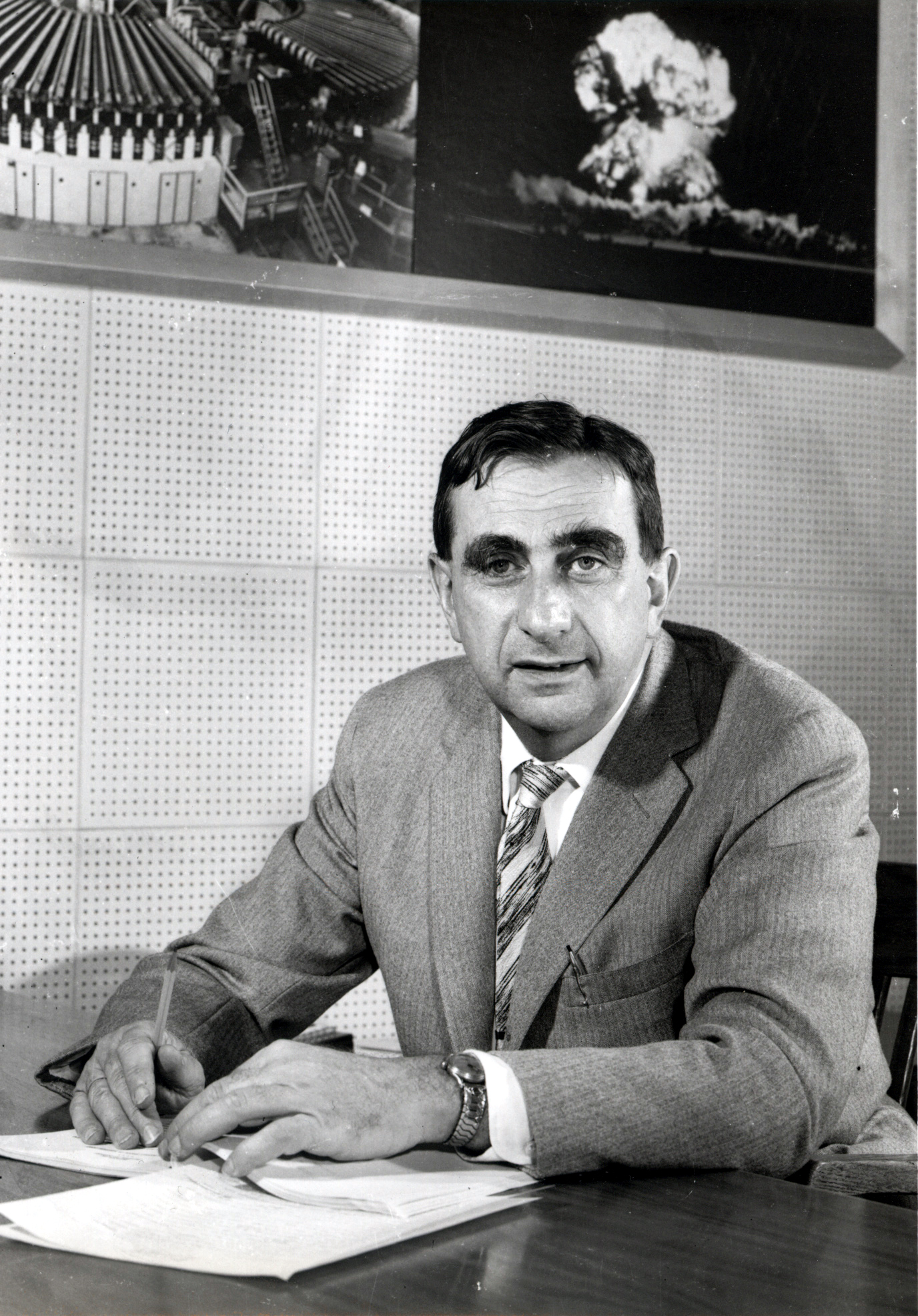From Memoirs: A Twentieth-Century Journey in Science and Politics by Edward Teller
As 1939 began, I was looking forward to seeing Fermi at the fifth theoretical conference at George Washington University, scheduled for January 19–20. Much to Geo’s [George Gamow’s] and my pleasure, Niels Bohr, who had just arrived from Copenhagen to work for a few weeks at Princeton, was also going to participate in the program.
Bohr arrived at Gamow’s home late in the afternoon the day before the conference began. An hour or so later, Geo called me in agitation: “Bohr has gone crazy. He says uranium splits.” That was all of Geo’s message. Within half an hour, I realized what Bohr was talking about. If the uranium nucleus (the heaviest of the naturally occurring elements) were to split, it could split in a variety of ways. That would account for the many simultaneously produced radioactivities.
[Lise] Meitner’s question had been answered, the tool [Leo] Szilard had wished for was now available, and Nazi Germany might well develop a devastating new weapon. My sleep that night was uneasy.
The subject of the conference was low-temperature physics and superconductivity, at that time an unexplained phenomenon. But Bohr was Bohr, and news is news. So Geo opened the conference by announcing (this time politely) that Bohr had something to say. Bohr then described the work in Nazi Germany, the conclusion that fission had occurred, and the decisive confirmation of fission in Copenhagen.
***
Fission was an amazing discovery. Hahn had promptly written to his friend Lise Meitner, an Austrian Jew who had been forced to leave her position at the Kaiser Wilhelm Institute only a few months before. Meitner, together with her nephew-collaborator Otto Frisch, who was in Copenhagen, immediately designed an experiment to verify the news. If uranium split in two, the fragments would move apart at high speed and lose many electrons. The highly charged fragments would deposit an unusual amount of energy in a Geiger counter (charged-particle detector). Meitner and Frisch discussed their plan with Bohr before he left Copenhagen and wired the successful result of their experiment to him on board ship. Thus he arrived in New York full of the news. Shortly afterward, he came to Washington.
Yet for all that the news was amazing, the discussion that followed Bohr’s announcement was remarkably subdued. After a few minutes of general comments, my neighbor said to me: “Perhaps we should not discuss this. Clearly something obvious has been said, and it is equally clear that the consequences will be far from obvious.” That seemed to be the tacit consensus, for we promptly returned to low-temperature physics.
That evening, Merle Tuve invited the conference participants to visit the Department of Terrestrial Magnetism. There we watched him and his collaborators demonstrate the fission of uranium in a Geiger counter. Tuve, after Bohr’s announcement, had rushed back to his laboratory and reproduced the Meitner-Frisch experiment in a few hours.
That the secret of fission had eluded everybody for all those years amazed me far more than the demonstration. In one of his experiments, Fermi had bombarded uranium with neutrons to observe the alpha particles that picked up extra energy from the neutrons. Because he carried out the experiment in a Geiger counter, the highly energetic fission fragments would have been unmistakable. But Fermi was a very careful experimenter. He covered his uranium with a thin sheet of inert material to stop the normal alpha particles (without the extra energy) in which he was not interested. That sheet also stopped the fission products, which had a short range but extremely high energy-density. Had Fermi forgotten to cover his sample even once, fission would have been discovered years earlier.
Physicist Paul Scherrer in Zurich had an even closer encounter with the discovery. He bombarded thorium (another of Szilard’s favorite substances) with neutrons and saw the fission fragments that Meitner and Frisch had identified. But Scherrer wouldn’t believe his eyes. He thought his Geiger counter was malfunctioning. What wasn’t expected wasn’t seen!
In 1939, I did not realize how fortunate it was that those slight changes in an experiment in Rome or Zurich did not occur. If fission had been discovered in 1933, work on the topic in Germany and the Soviet Union—two nations that took the military applications of science seriously—would have been well advanced by 1939. Under different conditions, the United States probably would not have been the first nation to possess nuclear explosives. Fermi, Scherrer, and Szilard, in their different ways, had a profound and beneficent influence on history.





